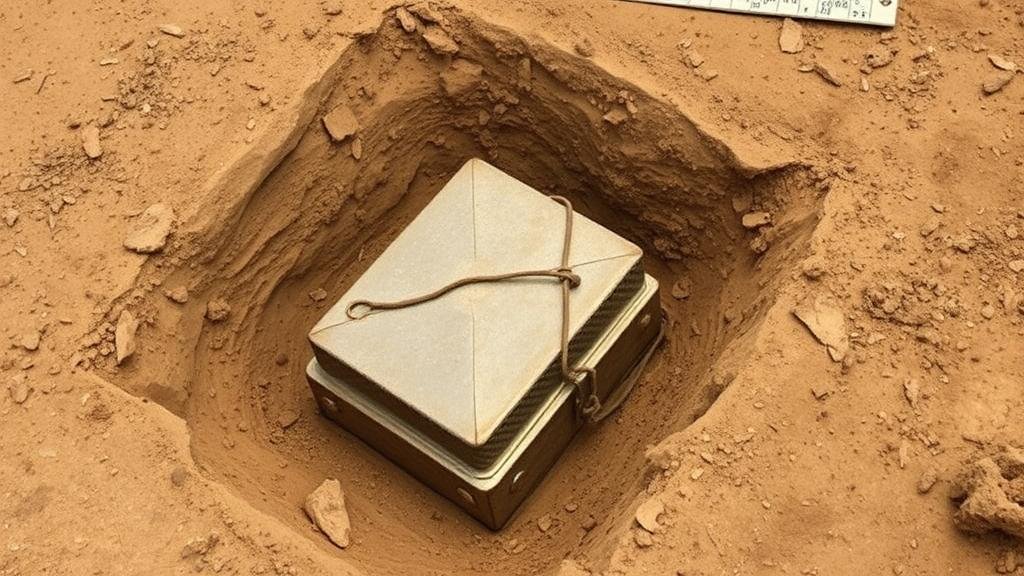The Use of Ritual Burial Practices to Signal Dangerous Areas Near Treasures
The Use of Ritual Burial Practices to Signal Dangerous Areas Near Treasures
Throughout history, various cultures have employed ritual burial practices not only as a means of honoring the deceased but also as a method of signaling danger or warning others about potential perilous areas, particularly near valuable resources such as treasures. These practices often intertwine mythology, superstition, and social structure, creating a complex interplay between death and the living world.
Historical Context of Ritual Burials
Ritual burials date back to prehistoric times, with some of the earliest examples found in sites such as the Neolithic burial mounds across Europe. In these cultures, burial practices were not solely about respect for the dead but also served practical and protective functions. For example, the ancient Egyptians would bury their pharaohs with great care, often including valuable goods to accompany them into the afterlife. Such practices were imbued with a belief system where the presence of treasures in proximity to graves could attract thieves, leading to the need for protective markers.
Symbolism and Markers in Ritual Burials
Ritual burials often included specific markers and symbols designed to convey warnings. For example, in many Indigenous cultures, the placement of a burial site could serve as a warning to treasure seekers or those encroaching on sacred land. use of stones, totems, or symbols etched in wood or rock would communicate the importance of the site. These markers acted as a dual signal: paying respect to the dead while simultaneously indicating the presence of potential danger.
- In Native American cultures, burial mounds often surrounded by specific flora would signal to outsiders that the area was sacred and dangerous to desecrate.
- In parts of Africa, the practice of burying ancestors with distinct artifacts also served as a method to warn against trespassing in areas considered sacred or taboo.
Cultural Variations and Their Implications
Different cultures have developed unique approaches to the intersection of ritual burial practices and treasure protection, illustrating a universal acknowledgment of risk associated with valuable resources.
For example, in ancient Greek mythology, the hero Theseus is said to have concealed treasures within a labyrinth, protected by the Minotaur. This narrative reflects the belief that treasures are inherently dangerous and that rituals surrounding death can serve to protect these sites. Similarly, Viking burial practices involved interring valuable artifacts with warriors, signaling to would-be plunderers the fatal consequences of disturbing the peace of the honored dead.
Modern Implications and Archaeological Insights
Modern archaeology often explores these ancient rituals, uncovering burial sites that offer insights into past civilizations values and protective measures. Excavations have revealed how burials connected to rich treasures often featured elaborate constructions or were marked with distinct features to deter intruders. For example, the discovery of the Tomb of Tutankhamun in 1922 showcased how intricate burial practices served to both honor a king and protect his wealth from grave robbers.
In contemporary society, these practices echo through urban legends surrounding buried treasures, wherein tales of warnings are often folded into narratives about the consequences of greed. tales suggest that disturbing such sites could lead to dire consequences, serving culturally as a moral lesson about respecting the dead and their legacies.
Case Studies: Analyzing Specific Instances
There are numerous case studies that illuminate the concept of using ritual burial practices as signals for dangerous areas:
- The Burial Mounds of the Ohio Valley: Native American burial mounds have been found throughout the Ohio Valley region in the United States. These mounds, often containing valuable goods, served to signify not only the resting places of the deceased but also acted as a deterrent to potential treasure hunters through their sacred status.
- The Pharaonic Tombs of Ancient Egypt: The grand tombs of ancient Egypt, elaborately designed with false walls and intricate traps, indicate an awareness of the dangers of treasure hunting. Rituals surrounding these sites reinforced their sanctity, warning against the potential consequences of trespass.
Conclusion: Lessons Learned from Ritual Burials
The relationship between ritual burial practices and the signaling of dangerous areas near treasures reminds us of the cultural narratives surrounding death and value. While these practices may seem archaic, their underlying principles can still resonate in modern society. Potential treasure hunters and archaeologists should approach such sites with respect and caution, as they are often laden with historical significance and inherent warnings.
In summary, understanding these ancient practices contributes to a greater comprehension of human civilizations moral frameworks, respect for the dead, and the recognition of the societal values attributed to treasures. By learning from the past, modern societies can foster a deeper appreciation for cultural integrity, encouraging responsible exploration and preservation of historical sites.


